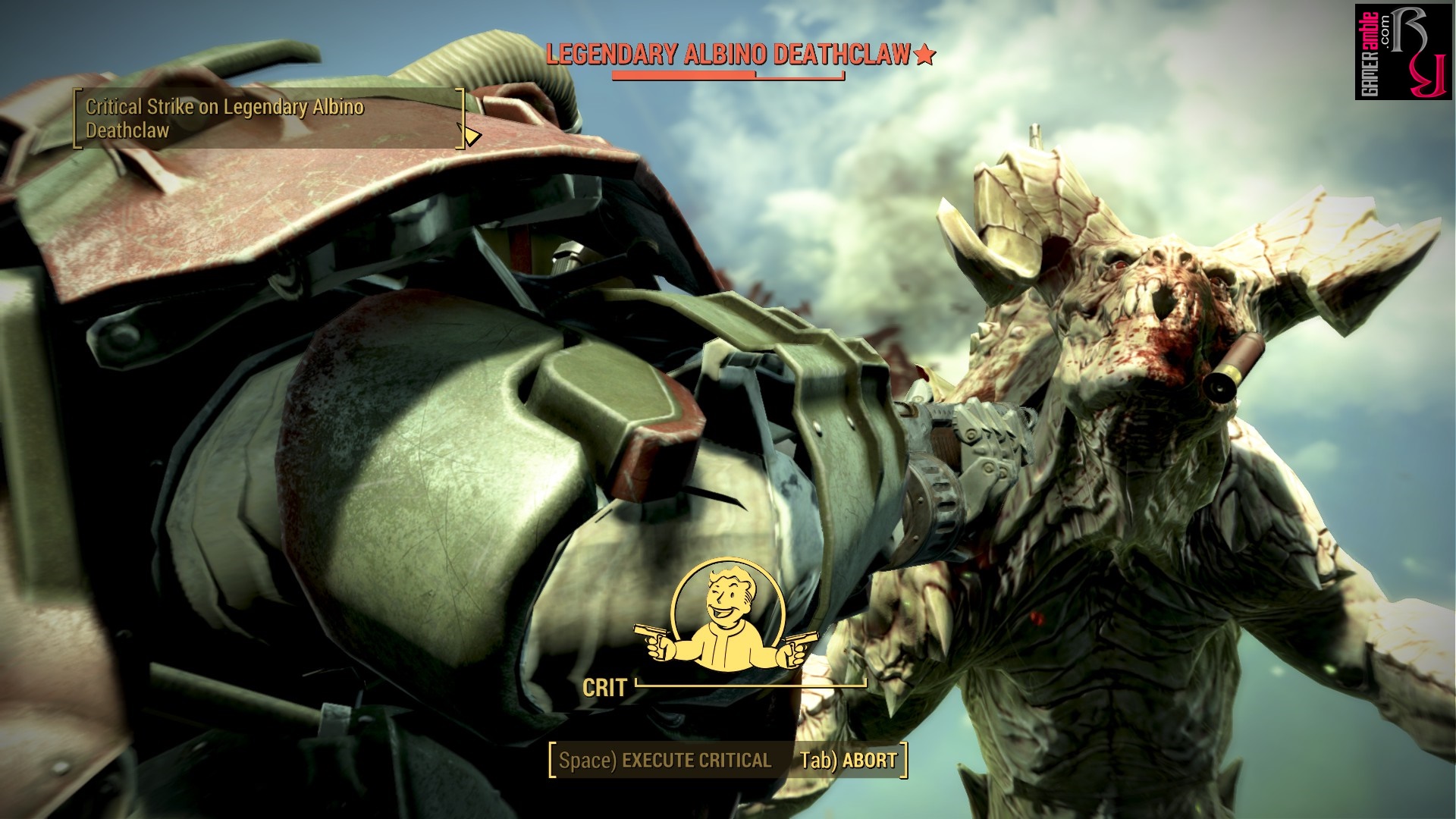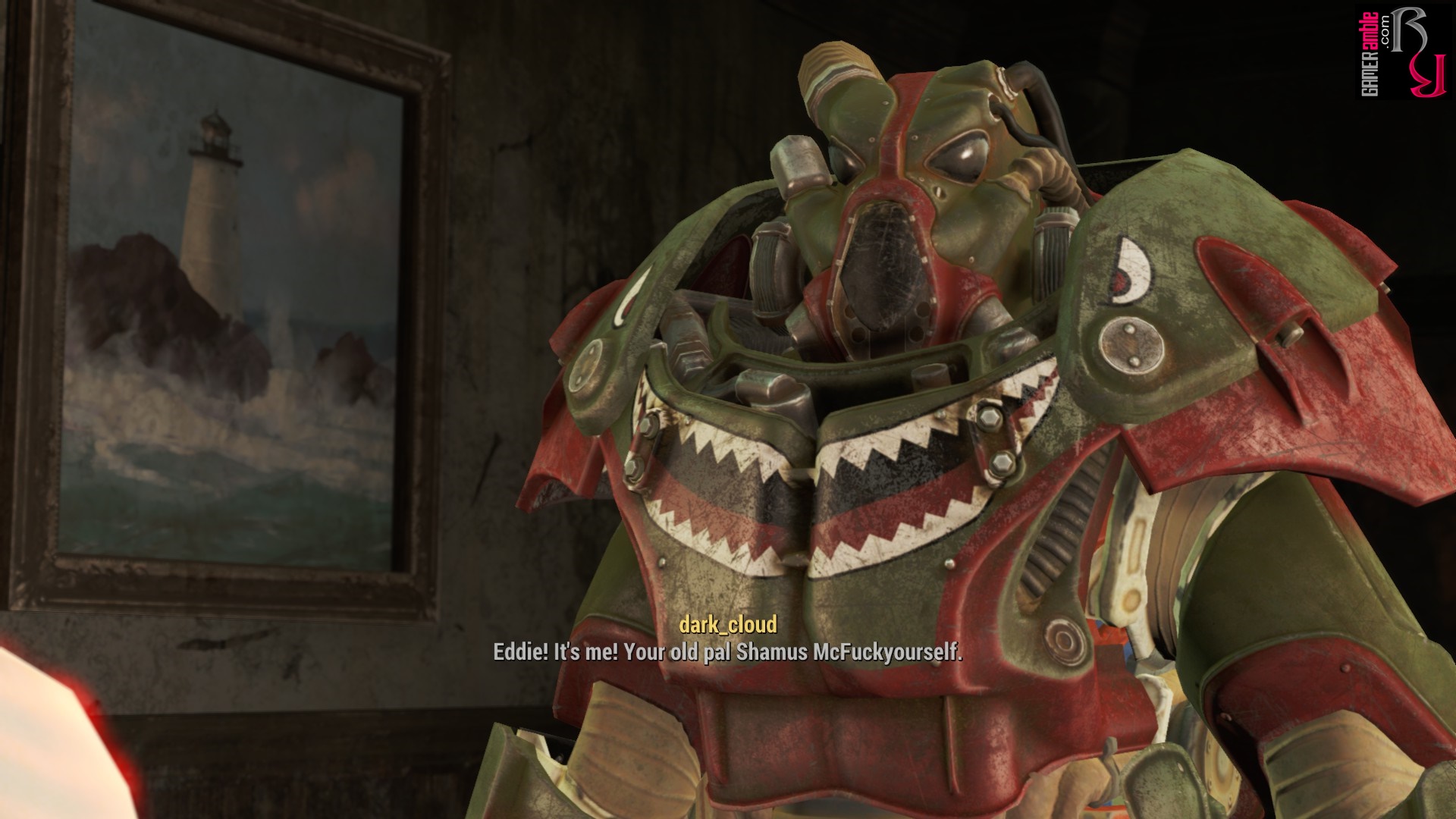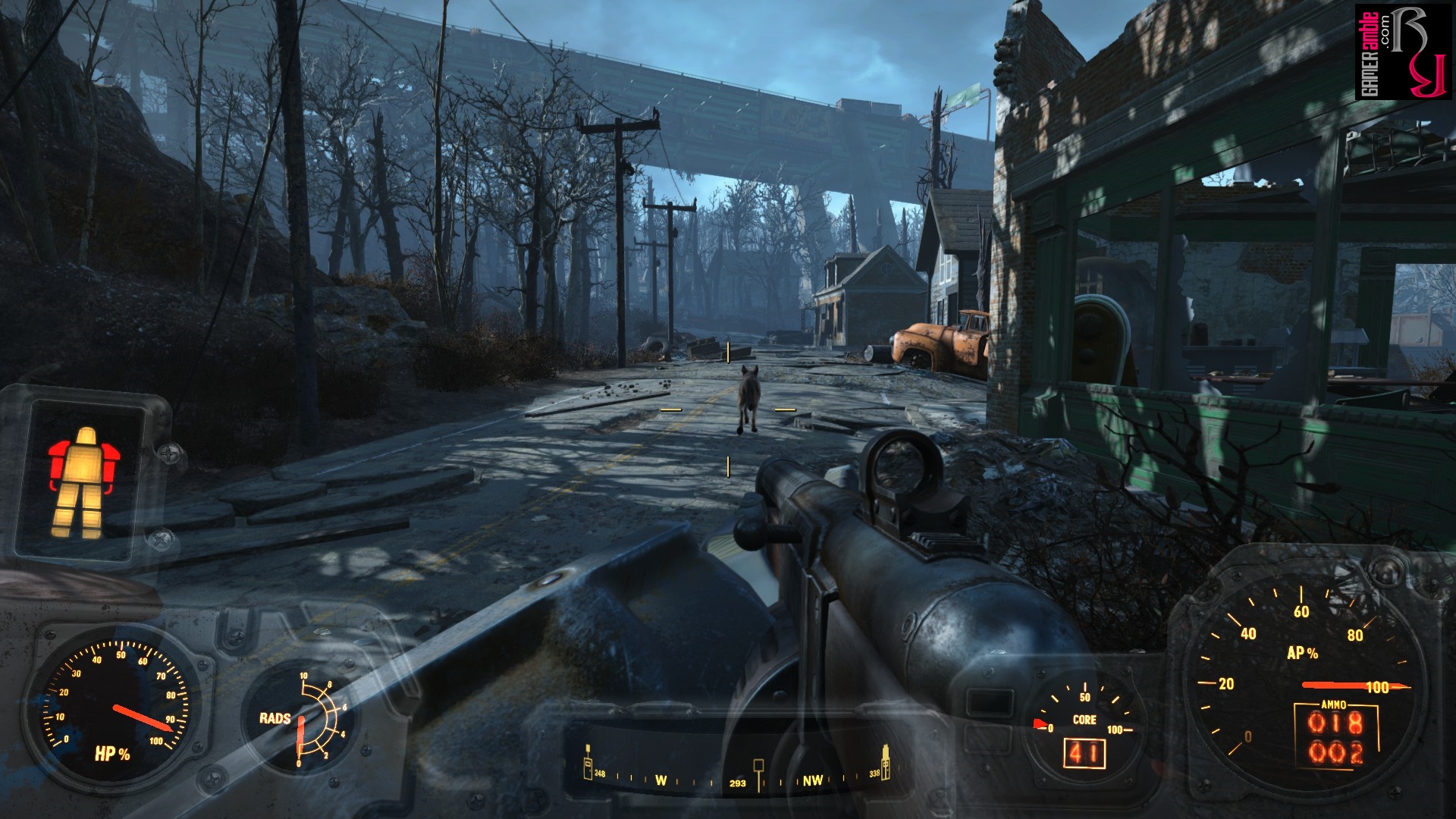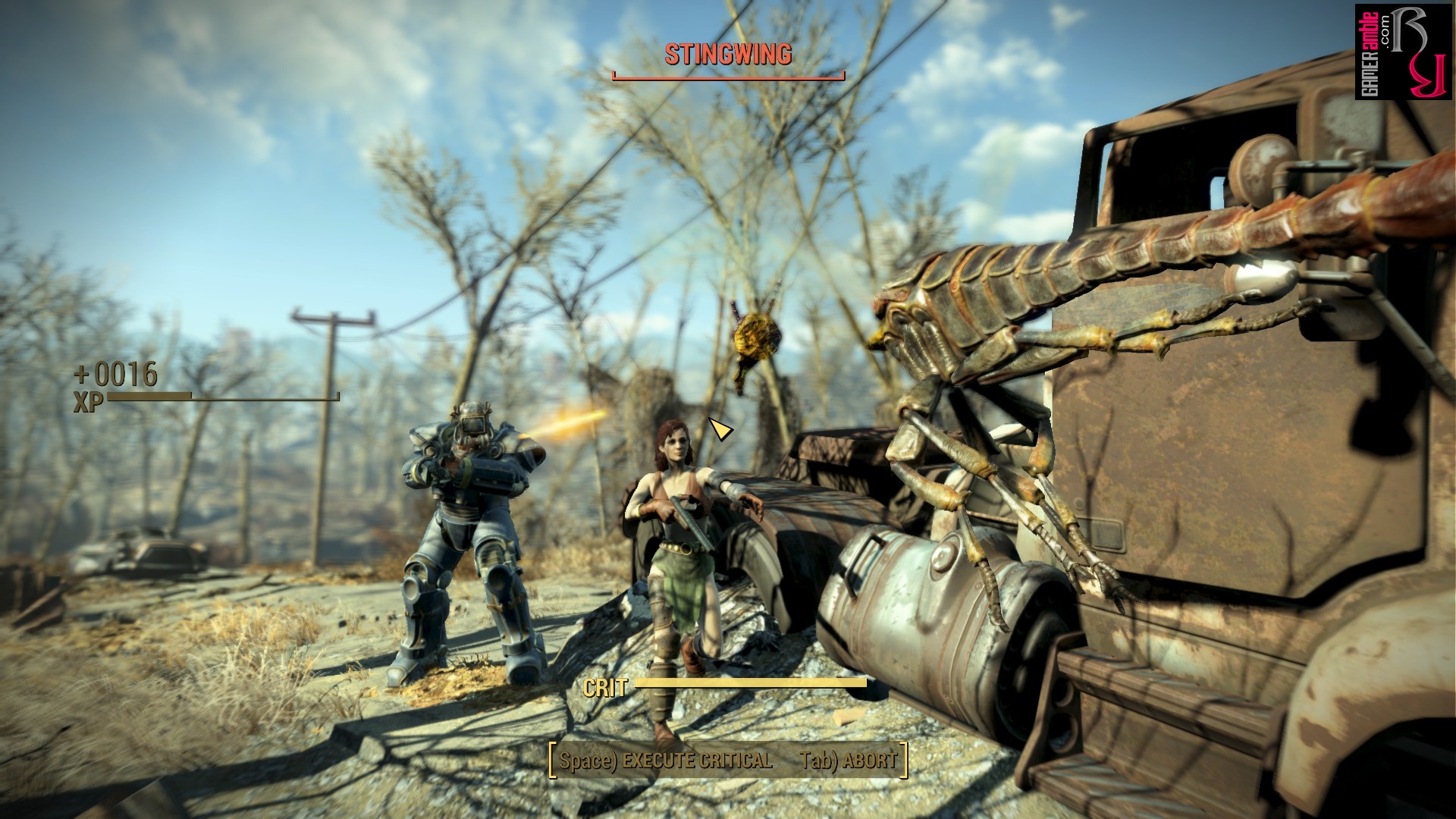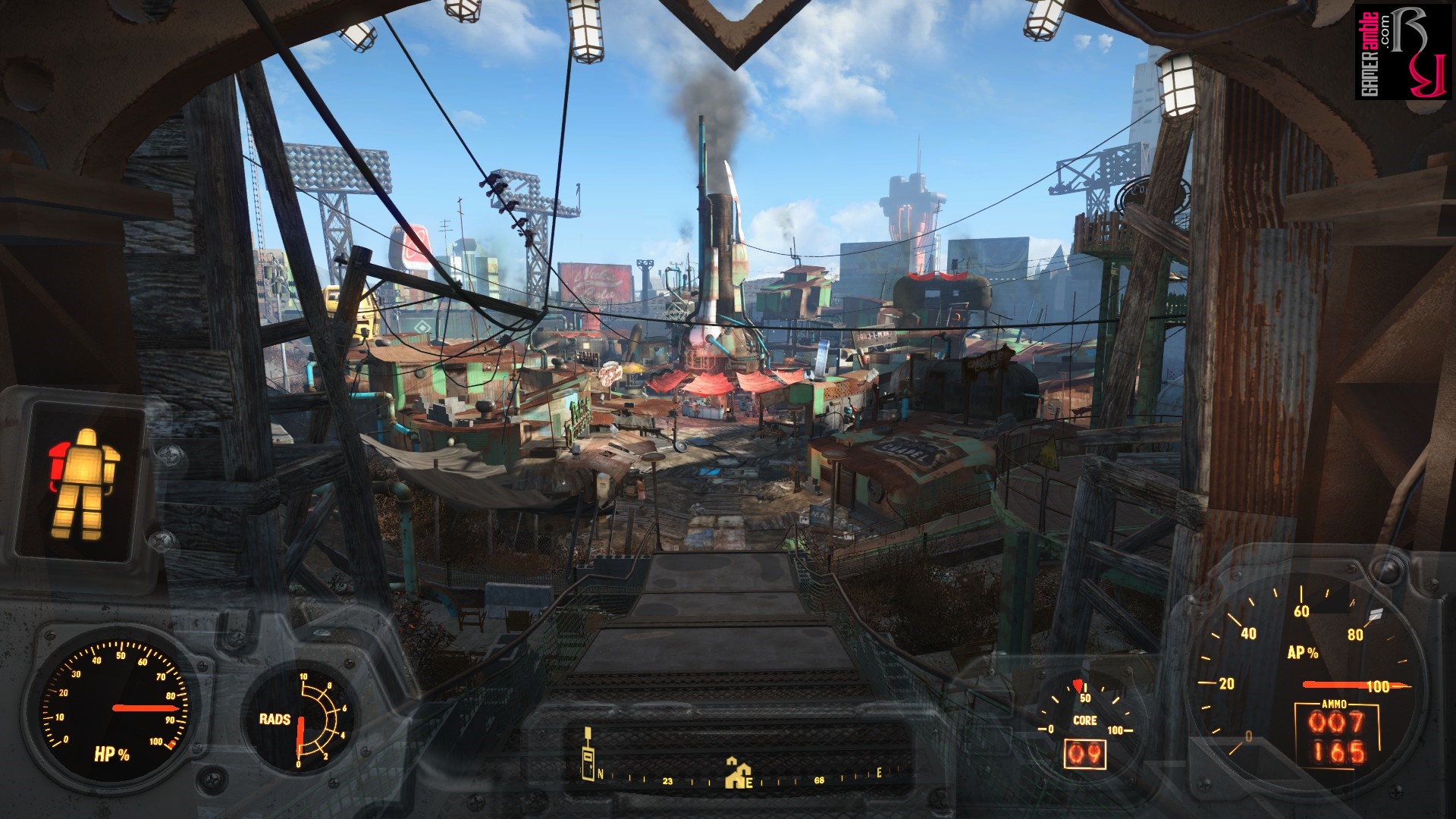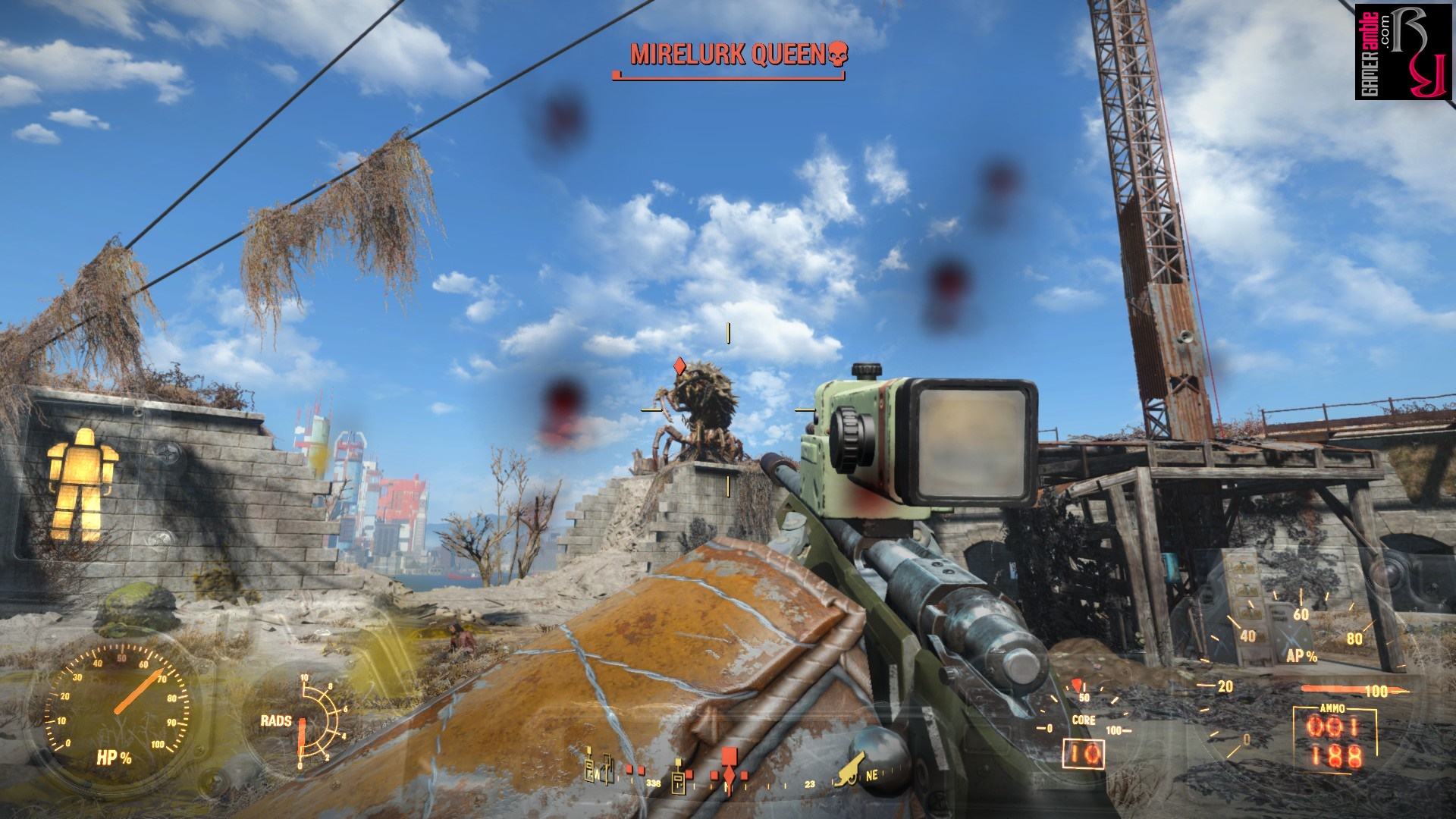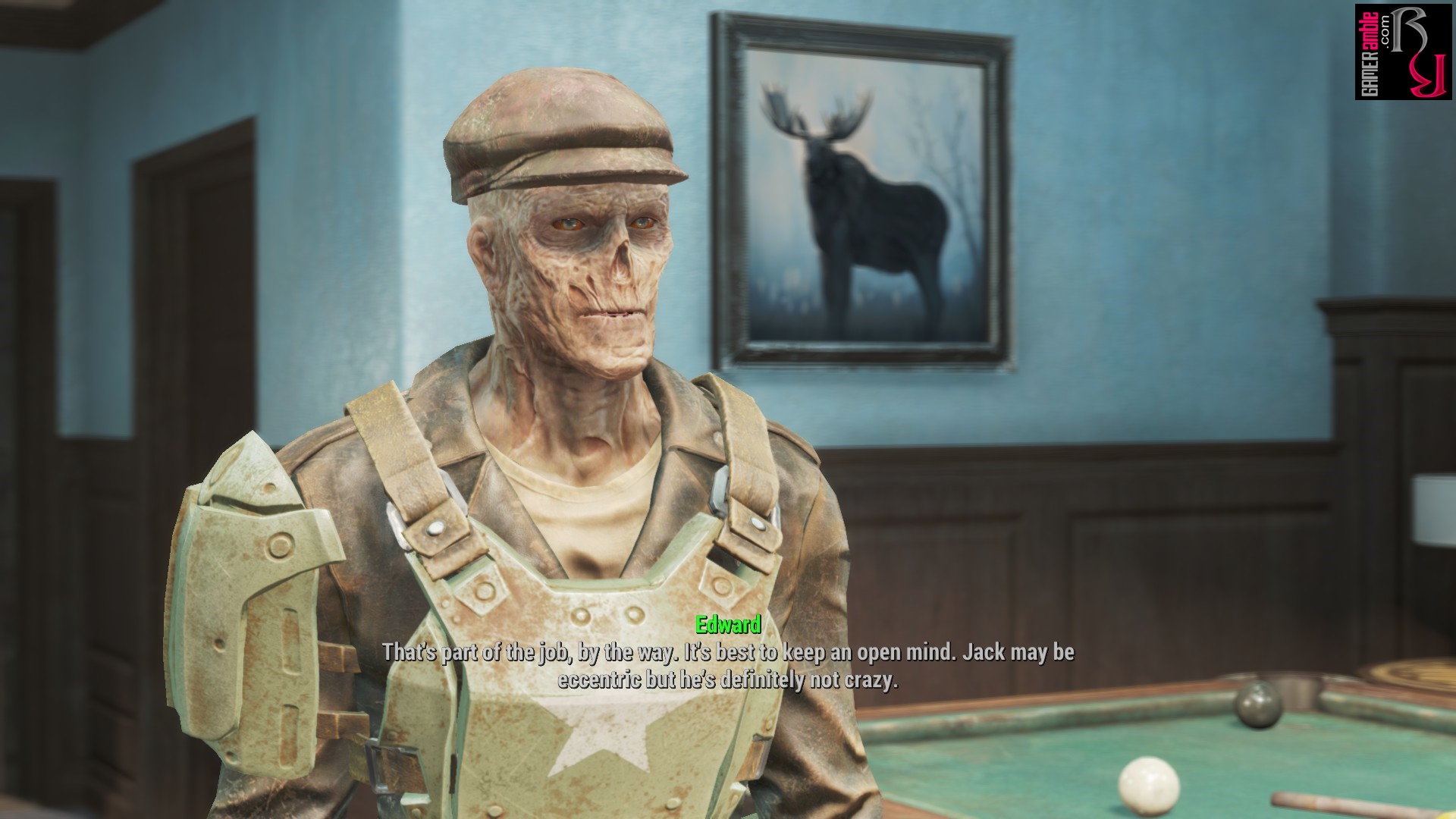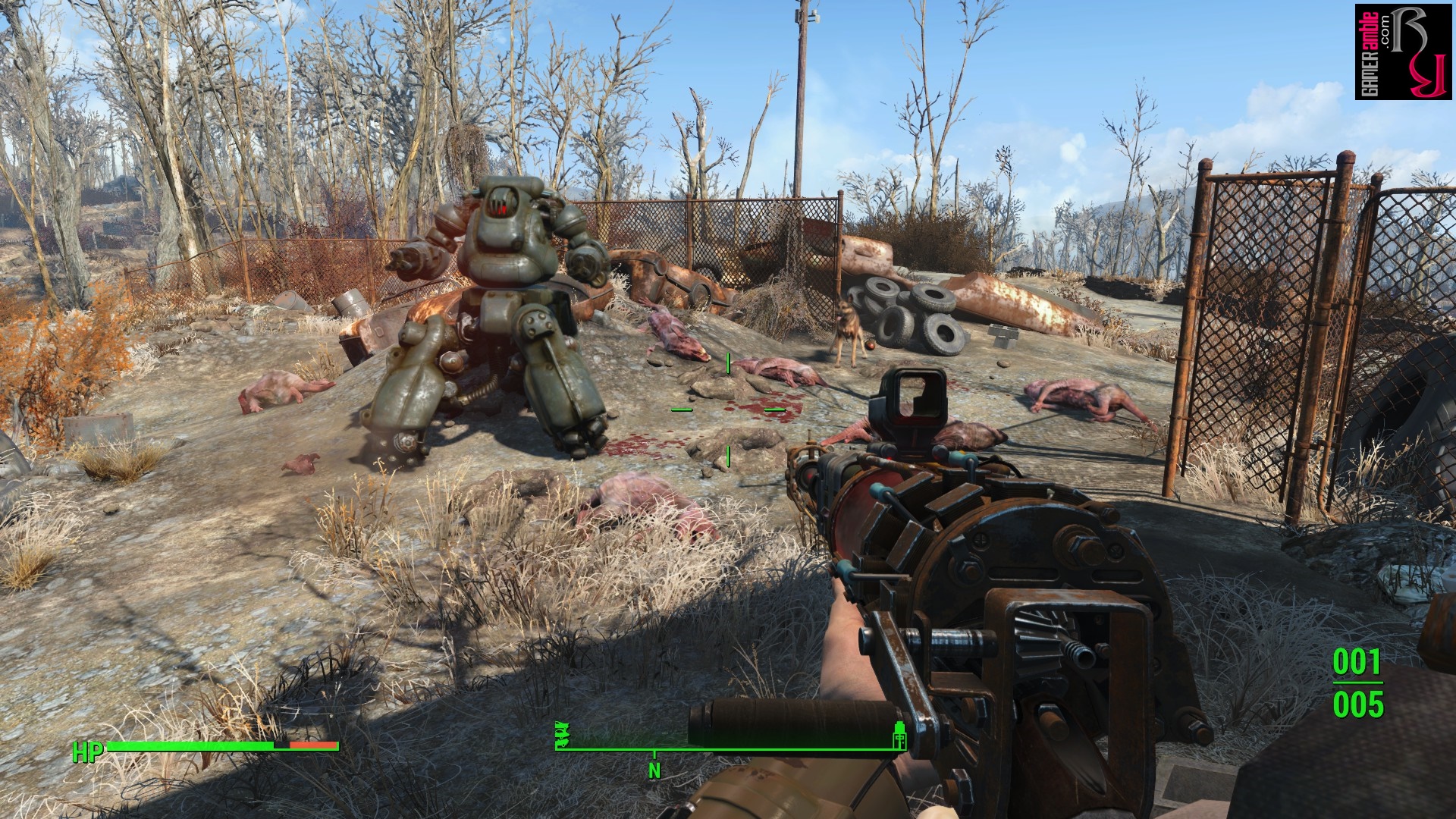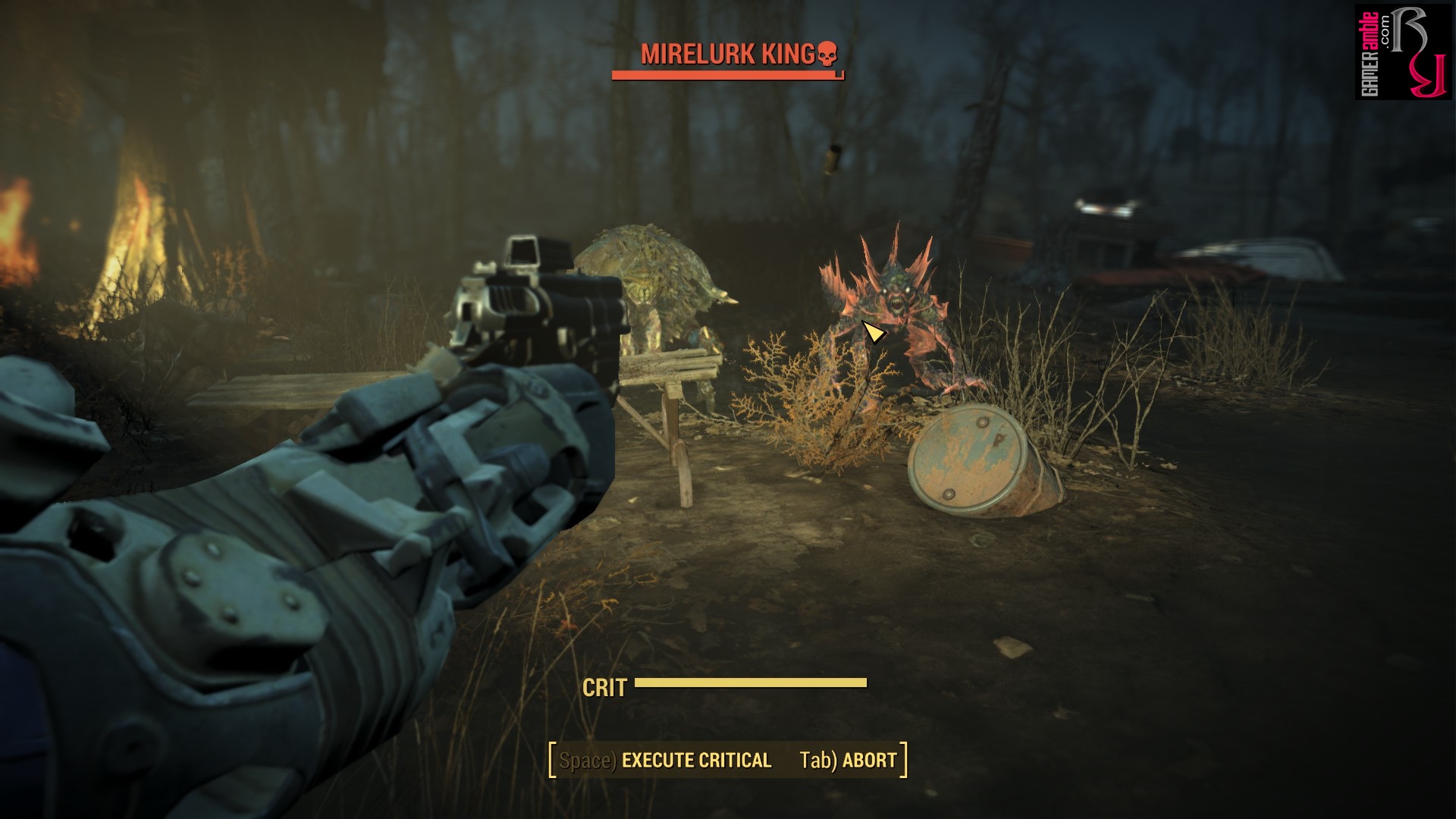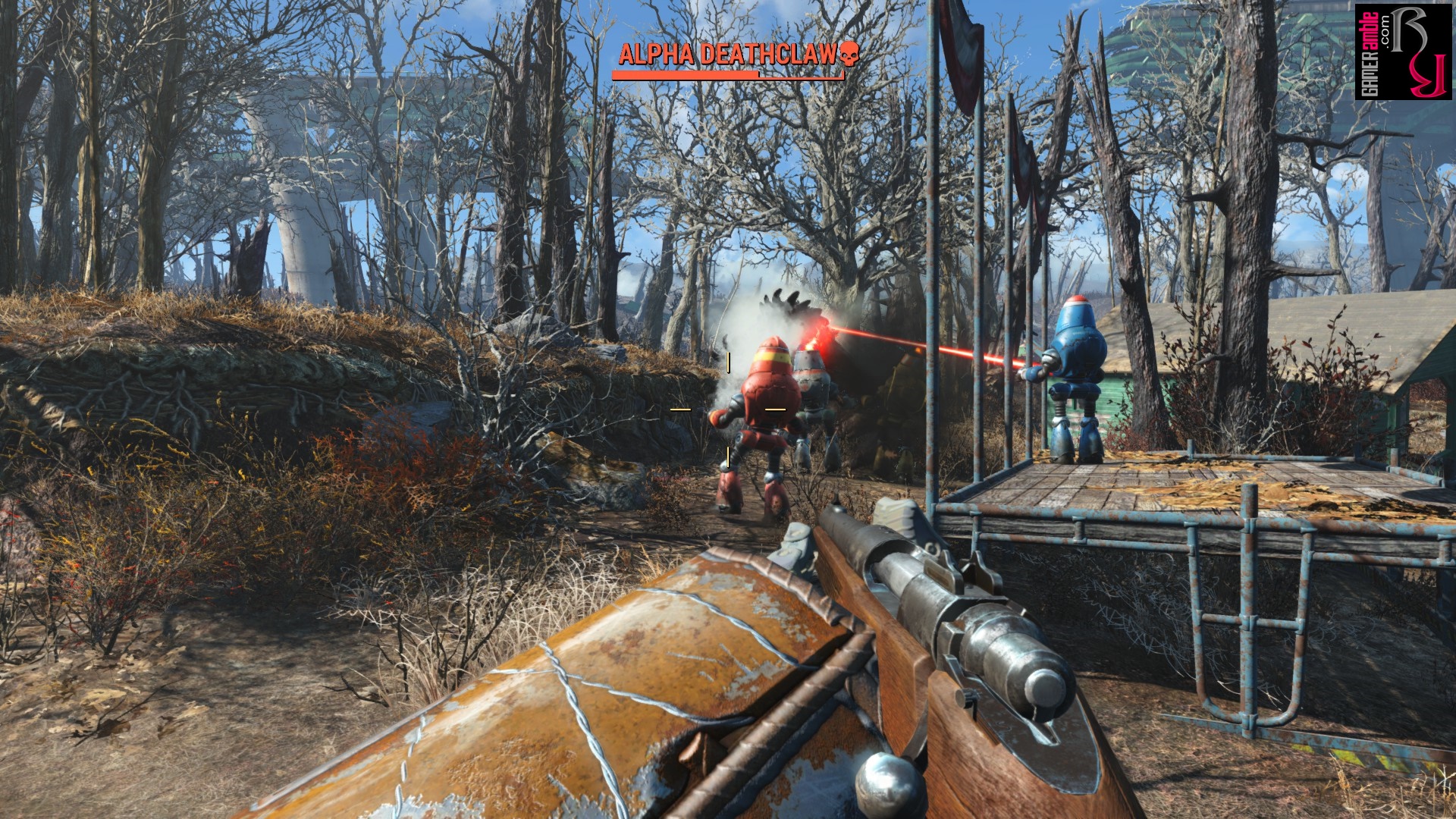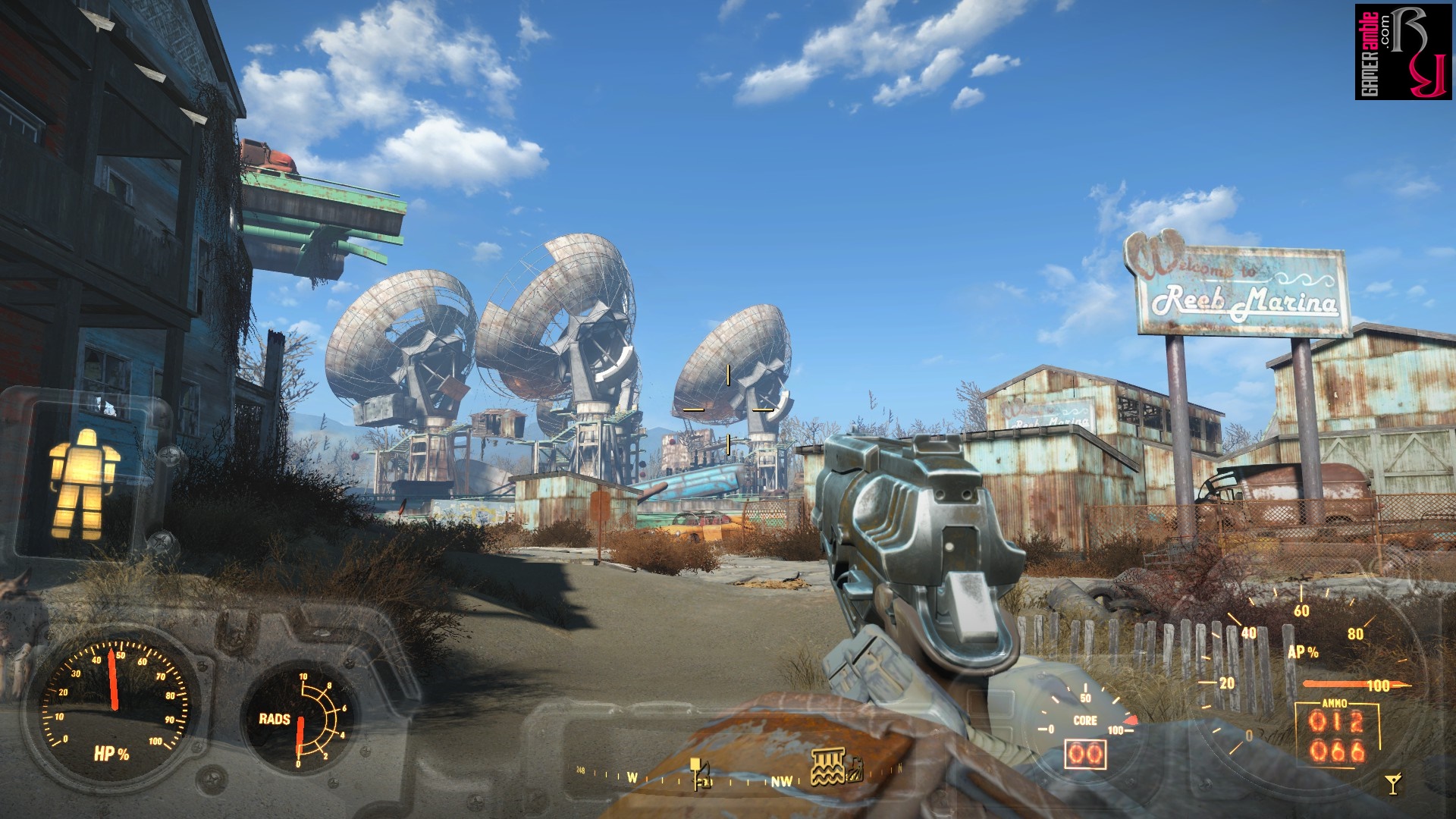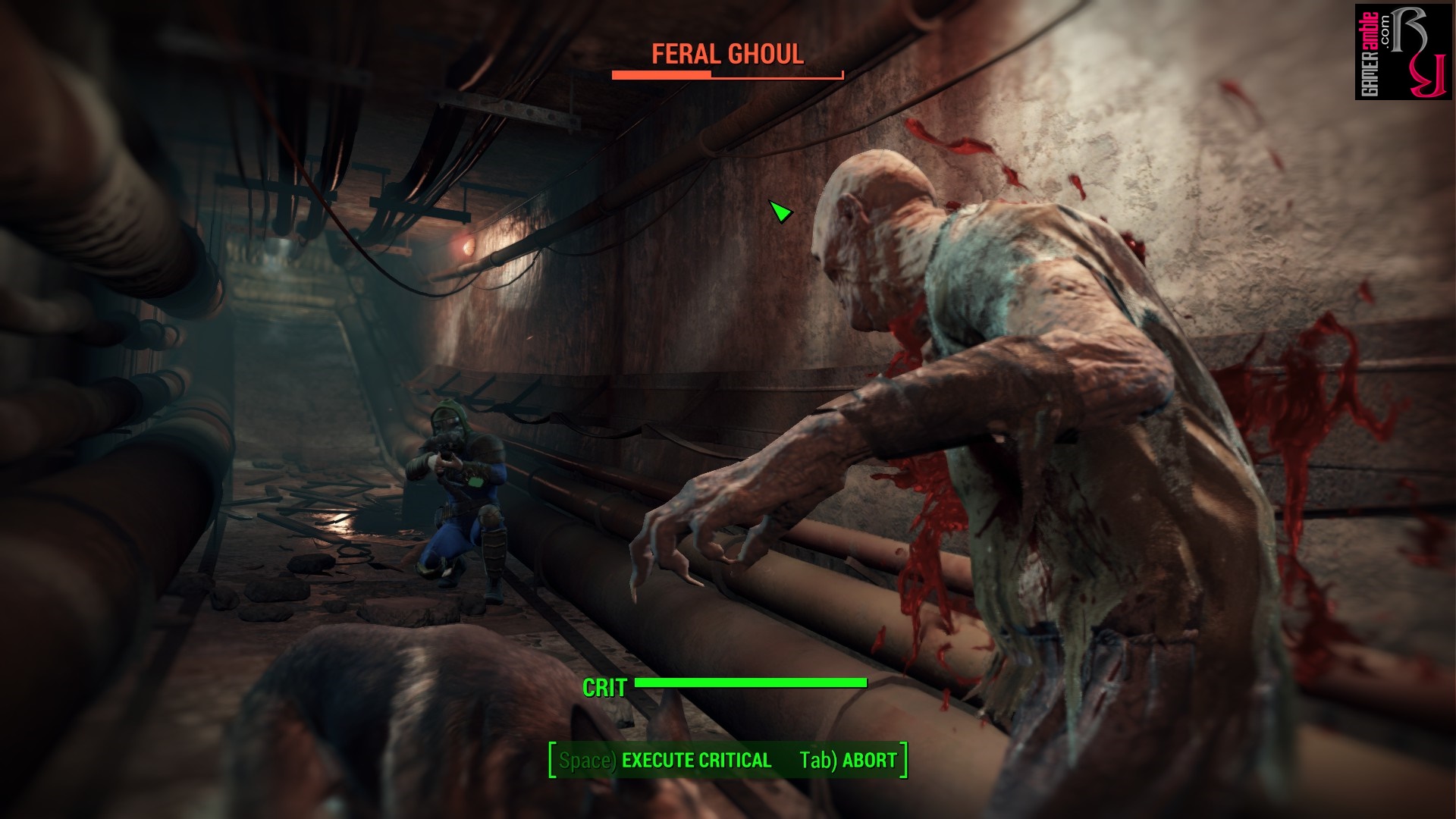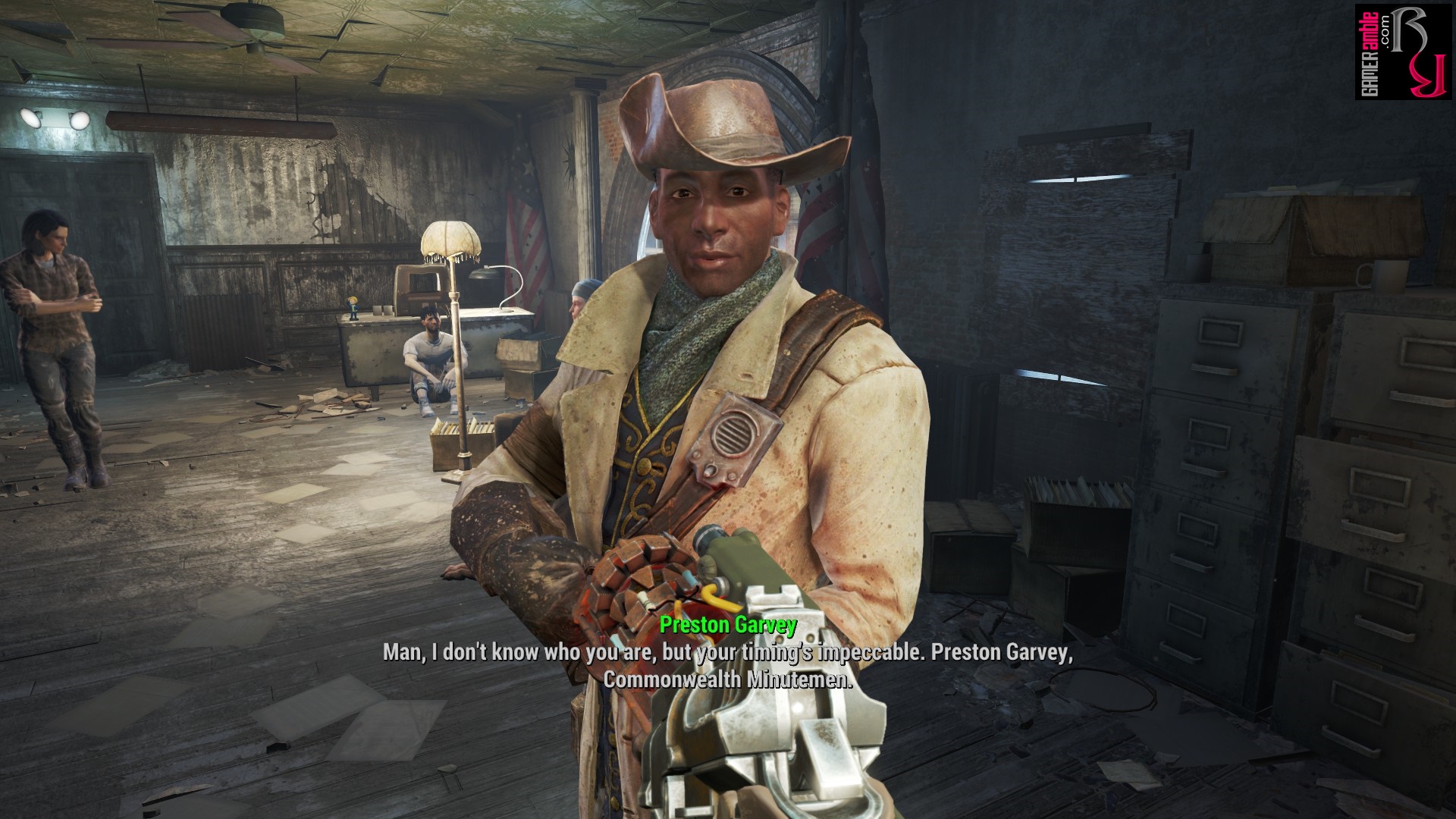Fallout 4
Developer: Bethesda Game Studios | Publisher: Bethesda Softworks | Release Date: 2015 | Genre: RPG | Website: Official Website | Purchase: Steam
October 23, 2077, is a significant date in Fallout lore, as it is the day when the world pretty much ended. Fallout 4 opens with a prologue that, for the first time, allows players to experience this terrifying event firsthand. After creating their character, players are treated to a slice of life in Sanctuary Hills, located near Concord, Massachusetts. As is the norm for the franchise, the game is set in an alternate version of history where advanced technology goes hand in hand with 1950s aesthetics. Players get to spend some time hanging out with their spouse, interacting with their baby son, and briefly chatting with a Vault-Tec representative before all hell breaks loose. Fortunately, Vault 111 is just a short jog from your house, but reaching its underground halls doesn’t mean it’s the end of your problems. Fallout fans will know that the vaults all had a more sinister purpose than providing safety for the inhabitants, and for Vault 111, this means getting shoved into a cryogenic tube and frozen alive. Your new existence as a human popsicle is briefly interrupted long enough to see your son being kidnapped from a nearby tube before it’s back to dreamland. When your character finally emerges from cryogenic stasis, it’s been 210 years since The Great War, and his only goal is to get his son back from whoever took him.
After Obsidian shook things up in Fallout: New Vegas, it feels a bit odd for Bethesda to return for another round of “find your missing relative in the post-apocalyptic wasteland” in Fallout 4. Instead of your father, you are looking for your son, but having the drive to brave the wasteland be almost the same as Fallout 3 is a bit of a kick in the head. However, Fallout 4 is set in a brand new area called The Commonwealth, which consists of the City of Boston and the surrounding Massachusetts region. The game world is larger than that of Fallout 3 and New Vegas, and once again, the world outside the vault is as inhospitable as it is fascinating to explore.
For players unfamiliar with the series, Fallout 4 is an action role-playing game set in an open world with post-apocalyptic environments. It is set ten years after the events of Fallout 3 and six years after New Vegas, so prior knowledge of the series is not really required to have fun. Of course, long-time fans of the series will get the most out of the series as one of the major factions is the Brotherhood of Steel, who played a big role in Fallout 3. There are even a few familiar faces who make an appearance, and players well versed in the Fallout lore will pick up plenty of new tidbits that fleshes things out.
With the release of Fallout 3, Bethesda switched the franchise to a first-person action role-playing game, which didn’t sit well with the die-hard fans of the original isometric overhead titles released by Interplay. The role-playing elements also took somewhat of a backseat to the looting and shooting. Developed by Obsidian Entertainment, New Vegas won back many fans with its engaging storyline and greater attention to the role-playing side of things. Unfortunately, this means that Fallout 4, which streamlines the role-playing mechanics even more, will be seen as a step backward for many fans. It makes Fallout 4 the most action-packed and accessible entry in the series, but this obviously comes at a cost.
In terms of story, your character sets off into the wasteland to find their son but quickly discovers that there are various factions to deal with. The earliest one players will encounter are the Minutemen, a ragtag group of militia soldiers trying to safeguard The Commonwealth. Players will also very quickly learn about the sinister Institute, which appears to be responsible for the “synth” problem in the area. These androids are the boogeymen of the game as they range from obviously inhuman to realistic enough to replace actual citizens. The only faction not creeped out by the synths is The Railroad, who help synths that have escaped from the Institute to safety. Last but not least is the Brotherhood of Steel, which makes a very dramatic entrance and sets up shop to do what they do best, which is to preserve and control technology. For obvious reasons, these four factions don’t exactly see eye to eye, which means eventually, players will have to pick a side. This choice leads to one of the different endings in the game, but until then, players are free to work with whoever they want and even ignore these factions altogether while exploring and doing side quests.
The basic Fallout formula remains the same, so once again, players get to explore, battle enemies, loot everything in sight, and level up their character. Fallout 4 introduces some new features that some players will love, which others might find annoying. The biggest new addition is the settlement system, whereby players can set up and manage their own little bastions of civilization in the wasteland. These are found at predetermined spots and can be populated by citizens after setting up a radio beacon to lure them over. The settlement system also ties in with the new crafting systems, as players can scrap all kinds of junk for components needed to build new utilities. Settlements need water, food, protection, and defenses, all of which players can construct. Constructing settlements can sometimes be a little finicky, and explaining all its minutia would take forever. Still, it is something that can provide players with hours of extra entertainment if they get hooked by it. For everyone else, it’s a nice optional extra that they can dabble in for a bit and then ignore while they get on with the rest of the game.
The crafting system also carries over to weapons and armor, as players can customize their gear more than ever. The game features a layered armor system, and each component, like the arms, legs, torso, and head, can be customized further with mods. Fallout 4 also has more than fifty guns that can be modified. The upside is that weapons and armor no longer suffer degradation like in the previous games, so that pistol you find at the start of the game can be modded and used right until the end without it breaking. The downside is that you’ll be lugging around more useless junk in your backpack than ever before, and the interface for sorting through it all is still a pain to use, but more on that later. Something that helps with all the extra weight is the Power Armor, which now plays a more critical role in the game. Players can strap themselves into one while wearing their entire suite of regular armor, and stomping around in them feels more like being inside a mech than just wearing an extra armor set. Each component of the Power Armor can also be upgraded and customized, but players must use fusion cores to operate the armor, or else it is just dead weight. Unlike regular armor, power armor can be damaged and must be repaired at special stations, so players must exercise some caution when charging into battle.
Combat in Fallout 4 has been spruced up, so it now feels even closer to a full-fledged first-person shooter than Fallout 3 did. Players can still switch to V.A.T.S to slow down time and select the body parts of foes to shoot at before letting the game get on with it, but it’s not as overpowered as it used to be. For one, the action only slows down instead of coming to a standstill, and players can still take damage in V.A.T.S., so it’s not an invincibility toggle like it used to be. Players still can’t change weapons in V.A.T.S. or lob grenades, but we found ourselves using it much less than in Fallout 3 and New Vegas. It is nice that players can now build up critical hits and save them for when needed, which saved us on many occasions.
The game features returning enemies such as mole rats, raiders, deathclaws, feral ghouls, and super mutants, as well as some new foes unique to The Commonwealth. The most prominent of these are the synths, which also highlight how enemies are now smarter than in previous games. In addition to enemies, the environment can also kill unwary players thanks to traps, radiation, and other perils. Players don’t have to brave all of these alone, though, as companions make a return and can help out in combat as well as help carry the loot. You can only have one companion at a time, but there’s a decent selection of them to find and you can also raise your affinity with them to unlock special perks. Players can issue commands to companions and equip them, so if you want to stomp around in matching power armor and have enough fusion cores to spare, there’s nothing stopping you from doing so.
Speaking of perks, Fallout 4 features a return of the SPECIAL character progression system, so players can put points into strength, perception, endurance, charisma, intelligence, agility, and luck. However, as mentioned earlier, the role-playing mechanics have been drastically streamlined. The game features no level cap, but instead of unlocking new skills when leveling up, players get to choose from almost 300 perks. There’s no downside to these perks, but each requires a certain SPECIAL threshold to unlock. It’s very easy to abuse these perks, so, for example, it’s possible to invest so much into stealth that your character can become invisible just by crouching and run around in power armor without alerting enemies. We did find ourselves missing the days of New Vegas, where having certain stats or skills was required for completing quests in alternative ways. In Fallout 4, you can pass virtually every persuasion check with high enough charisma, and there’s typically only one or two ways to finish each quest. In most cases, the solution involves killing everyone standing in your way, which feels very shallow compared to New Vegas.
Visually, Fallout 4 set a new bar for the series, and the combination of using the Creation Engine and the release of a free high-resolution texture pack makes for some stunning vistas. The game can be played in first or third-person mode, and the greater draw distance hammers home the desolation of the wasteland. The revamped character editor makes it easier than ever to create a reasonable impression of your own face. Fallout 4 also features more impressive setpieces, such as the arrival of the Brotherhood of Steel, and we also found ourselves stumbling into chaotic battles between factions at times. Thanks to the larger game world, it is also possible to miss some locations entirely during your first playthrough. Players can fast travel between any previously reached locations, which cuts down on needlessly having to run back and forth. However, players who want to experience full immersion can play on survival difficulty where this feature is disabled. Of course, with this being a Bethesda game, there’s still the usual amount of jank, and even after multiple patches, we had to bear witness to questionable physics, weird animations, and Brahmin getting stuck in the most awkward places.
Fallout 4 is the first game in the series to feature a fully-voiced protagonist. The standard of voice acting is quite high but appears to have come at the cost of more in-depth dialogue trees and choices. During conversations, players only have access to four dialogue options, and each one only shows the gist of what your character will say. Something that will further annoy fans of the original games is the fact that it is very difficult to play as an evil character. In most cases, it’s simply a choice between being a goody two shoes, neutral, or a sarcastic asshole. Having higher charisma can result in getting more caps or skipping a step or two during a quest but rarely alters the outcomes of events in significant ways. The developers touted the ability to simply walk away from any conversation as a feature. Still, in most cases, we found ourselves getting knocked away from them by an NPC wandering past aimlessly. This forced us to restart the entire conversation, and by the time it happened for the third or fourth time in a row, we were ready to pickpocket the offending NPC and leave them a nuke mine in their pants as a present. Thankfully, it’s possible to quicksave at any time, so your war crimes can be erased with a tap of the F7 key.
The Fallout series has always excelled in the audio department, and Fallout 4 delivers once again with a mixture of old and new. Diamond City Radio is the most prominent station and features licensed music along with short announcements about the consequences of your actions in the wasteland. Along with reused tracks like “Maybe” by the Ink Spots and Crazy He Calls Me by “Billie Holiday,” the soundtrack also has some new songs. These include Grandma Plays the Numbers by Wynonie Harris, Butcher Pete (Part 2) by Roy Brown, Orange Colored Sky by Nat King Cole, and Uranium Fever by Elton Britt. Players who tire from these golden oldies can switch to Radio Freedom for some fiddle music or the classical radio for trucks by Chopin, Wagner, Tchaikovsky, Brahms, and more. Players can also switch off the radio altogether and listen to the regular soundtrack. Some tracks, such as the one that players play during and after combat, can become a bit repetitive, but overall, the original orchestral score is good, albeit a bit more upbeat than we expected from a Fallout game.
Exploring the wasteland, shooting enemies, and looting everything in sight is easy, but the rest of the interface can be annoying. It feels like it was designed for consoles rather than PCs, and we often left behind items because we dreaded the thought of having to wade through the cluttered categories with endless scrolling to locate them again in our inventory. This also made comparing the stats of different items a pain, which is a pity as the game features tons of legendary weapons and armor drops. It is possible to sort your inventory by weight, damage, value, etc, while weapons can be favorited and assigned to hotkeys.
Overall, Fallout 4 is a bigger, more polished, and more accessible game than its predecessors, but it sacrifices some of the complexities that made the series so great in the process. The new settlement system is a nice addition, but it can become annoying when players have to protect them from endless attacks. In fact, we specifically started avoiding the leader of the Minutemen, Preston Garvey, because he kept giving us generic settlement missions every time he spotted us. The ability to break down things for building materials or crafting components is nice, but it also means more inventory clutter than ever before. Exploration is still a blast, and areas like Diamond City, which is set inside a baseball stadium, show a lot of creativity. Of course, there are still plenty of generic stations, shops, parks, vaults, churches, stores, and factories to pad out the experience, but we rarely passed up the opportunity to clear them out and loot them.
Players expecting a sequel to New Vegas will likely find Fallout 4 a little disappointing, but it is a decent follow-up to Fallout 3. The best part of the game is still the environmental storytelling, and checking out all the terminals, logs, notes, and hollotapes reveals a wealth of lore that many players might overlook. Players who explore off the beaten path might also find moving examples of how people met their unfortunate fates many years ago simply by how their remains are arranged. The game also features plenty of memorable characters, such as the detective, Nick Valentine, the ghoul Hancock, and the whole crew of robots that crew the USS Constitution and are stuck on top of a bank building. We would have loved to see the game incorporate some of the elements that made New Vegas such a memorable experience, but judged on its own merits, it is still a fun game that can take many, many hours to explore fully.
Please note that this review is for the base version of the game without any mods installed. Bethesda has announced a free update for Fallout 4 that will be released on April 25, 2024, and will add features such as widescreen and ultra-widescreen support, fixes, quest updates, and more content. This update will also make Fallout 4 Steam Deck verified.
System Requirements
- Requires a 64-bit processor and operating system
- OS *: Windows 7/8/10 (64-bit OS required)
- Processor: Intel Core i5-2300 2.8 GHz/AMD Phenom II X4 945 3.0 GHz or equivalent
- Memory: 8 GB RAM
- Graphics: NVIDIA GTX 550 Ti 2GB/AMD Radeon HD 7870 2GB or equivalent
- Storage: 30 GB available space
- Requires a 64-bit processor and operating system
- OS *: Windows 7/8/10 (64-bit OS required)
- Processor: Intel Core i7 4790 3.6 GHz/AMD FX-9590 4.7 GHz or equivalent
- Memory: 8 GB RAM
- Graphics: NVIDIA GTX 780 3GB/AMD Radeon R9 290X 4GB or equivalent
- Storage: 30 GB available space


